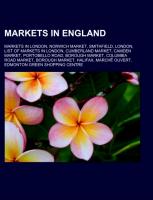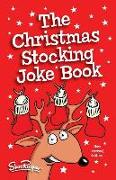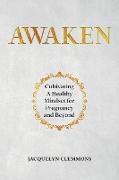Markets in England
BücherAngebote / Angebote:
Source: Wikipedia. Pages: 51. Chapters: Markets in London, Norwich Market, Smithfield, London, List of markets in London, Cumberland Market, Camden Market, Portobello Road, Borough Market, Columbia Road market, Borough Market, Halifax, Marché ouvert, Edmonton Green Shopping Centre, Petticoat Lane Market, Brixton Market, Hungerford Market, Birmingham Wholesale Markets, Exchange Alley, Walthamstow Market, Old Spitalfields Market, Shepherd Market, Leadenhall Market, Broadway Market, Market Hill, Cambridge, Covered Market, Oxford, Bermondsey Market, East Street Market, Leicester Market, Electric Ballroom, Leeds Kirkgate Market, Chapel Market, Exmouth Market, Romford Market, The Blue, Todmorden Markets, Chrisp Street Market, Berwick Street Market, Clare Market, Camden Passage, Queens Road Market, Brick Lane Market, Barking Market, Kensington Market, London, St Nicholas Market, Queen's Crescent Market, Deptford Market, Lambeth Walk, Surrey Street Market, Ridley Road Market, Barnet Market, Sunday UpMarket, Leather Lane, Backyard Market, Lower Marsh Market, Earlham Street Market, Strutton Ground Market, Nag's Head Market. Excerpt: Norwich Market (also known as Norwich Provision Market) is an outdoor market consisting of around 200 stalls in central Norwich, England. Founded in the latter part of the 11th century to supply Norman merchants and settlers moving to the area following the Norman conquest of England, it replaced an earlier market a short distance away. It has been in operation on the present site for over 900 years. By the 14th century, Norwich was one of the largest and most prosperous cities in England, and Norwich Market was a major trading hub. Control of, and income from, the market was ceded by the monarchy to the city of Norwich in 1341, from which time it provided a significant source of income for the local council. Freed from royal control, the market was reorganised to benefit the city as much as possible. Norwich and the surrounding region were devastated by plague and famine in the latter half of the 14th century, with the population falling by over 50%. Following the plague years, Norwich came under the control of local merchants, and the economy was rebuilt. In the early 15th century, a Guildhall was built next to the market to serve as a centre for local government and law enforcement. The largest surviving mediaeval civic building in Britain outside London, it remained the seat of local government until 1938 and in use as a law court until 1985. In the Georgian era, Norwich became an increasingly popular destination with travellers, and developed into a fashionable shopping town. Buildings around the market were developed into luxury shops and coaching inns. The eastern side of the market was particularly fashionable, and became known as Gentleman's Walk. The area around the market had become very congested by the 19th century, but the council was unable to raise funds for improvement and few alterations were made. Because many of the market's stalls were privately owned, the council was unable to rearrange the market into a more rational layout. Following the Firs
Folgt in ca. 5 Arbeitstagen




